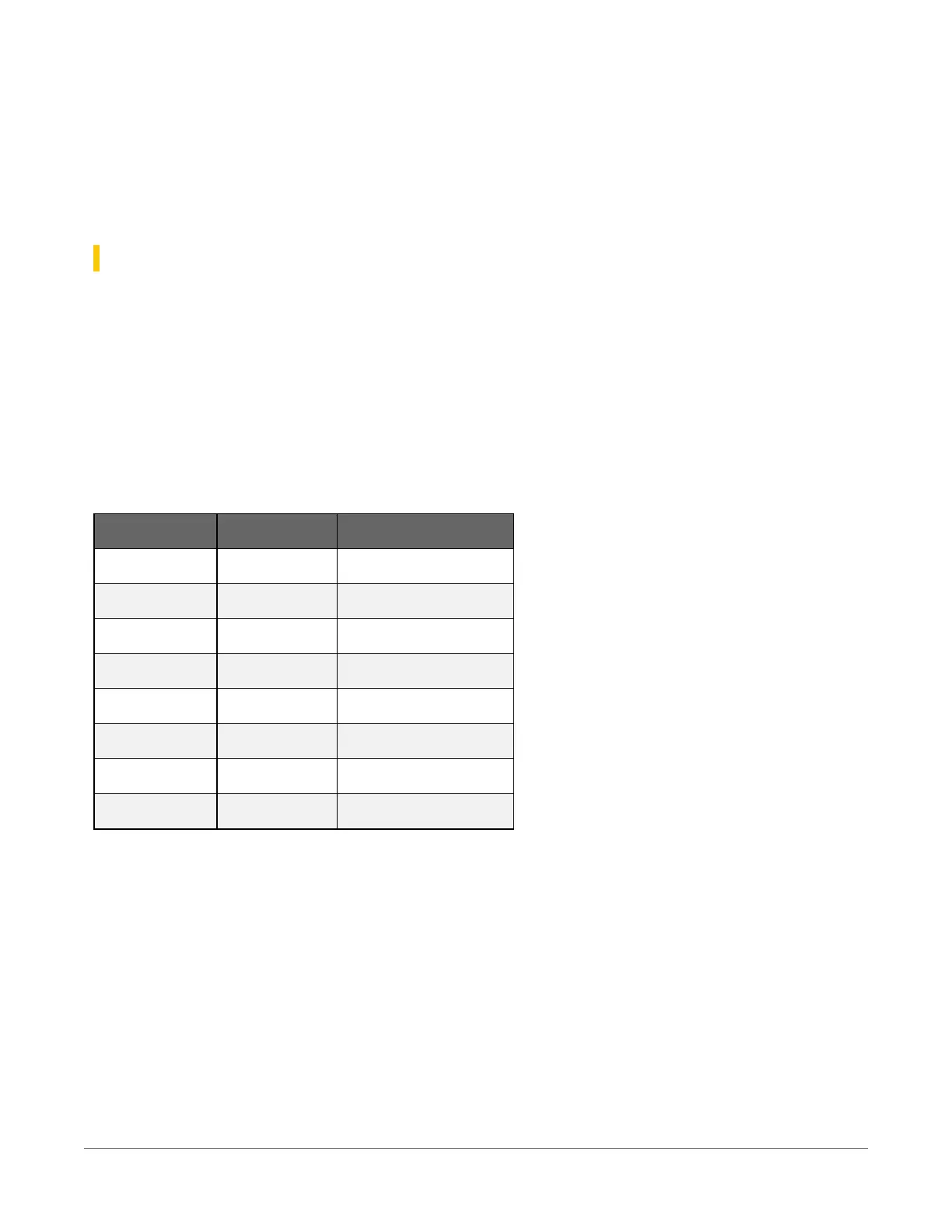In big-endian format, the byte containing the most significant bit is stored first, then the
following bytes are stored in decreasing significance order, with the byte containing the least
significant bit stored last. Little-endian format reverses this order: the sequence stores the least
significant byte first and the most significant byte last. Endianness is used in some Modbus
programming so it is important to note that the CR300 is a little-endian instrument.
19.2.6.2 Function codes
A function code tells the server which storage entity to access and whether to read from or write
to that entity. Different devices support different functions (consult the device documentation for
support information). The most commonly used functions (codes 01, 02, 03, 04, 05, 15, and 16 )
are supported by Campbell Scientific data loggers.
Most users only require the read- register functions. Holding registers are read with function
code 03. Input registers are read with function code 04. This can be confusing, because holding
registers are usually listed with an offset of 40,000 and input registers with an offset of 30,000.
Don’t mix up the function codes. Double check the register type in the device documentation.
Function code Action Entity
01 (01 hex) Read Discrete Output Coils
05 (05 hex) Write single Discrete Output Coil
15 (0F hex) Write multiple Discrete Output Coils
02 (02 hex) Read Discrete Input
04 (04 hex) Read Input Registers
03 (03 hex) Read Holding Registers
06 (06 hex) Write single Holding Register
16 (10 hex) Write multiple Holding Registers
The write-register functions will only work on holding registers. Function 06 only changes one 16-
bit register, whereas function 16, changes multiple registers. Note, when writing registers, the
Variable parameter for the ModbusClient() instruction refers to a source, not a
destination.
19. Communications protocols115
